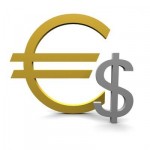Yesterday’s trade saw EUR/CHF within the range of 1.0690-1.0792. The pair closed at 1.0777, gaining 0.67% on a daily basis.
At 7:47 GMT today EUR/CHF was down 0.02% for the day to trade at 1.0763. The pair touched a daily low at 1.0756 at 7:10 GMT.
Fundamentals
Euro area
Harmonized consumer inflation – final estimate
The final annualized consumer inflation in the Euro zone, evaluated in accordance with Eurostat’s harmonized methodology, probably confirmed the preliminary rate at -0.6% in January, which was reported on January 30th. If confirmed, this would be the lowest annual inflation since July 2009, when a final rate of -0.6% was reported. In December the final HICP reading pointed to annual inflation rate of -0.2%, which matched the preliminary estimate. According to the preliminary data, in January the negative inflation rate was influenced by a fall in energy prices (-8.9%, compared with -6.3% in December). Prices are also expected to drop for food, alcohol and tobacco (-0.1%, compared with a flat performance in December) and non-energy industrial goods (-0.1%, compared with a flat reading in December).
The index shows the change in price levels of a basket of goods and services from consumer’s perspective and also reflects purchasing trends. The main components of the HICP are food, alcohol and tobacco (accounting for 19% of the total weight), energy (11%), non-energy industrial goods (29%) and services (41%).
The HICP is used to evaluate and compare inflation rates between Member States, according to Art. 121 of the Amsterdam’s Agreement and directives by the European Central Bank (ECB), in order the latter to achieve price stability and implement monetary policy. The HICP aggregates are calculated as a weighted average of each member state’s HICP components.
In case the HICP fell more than anticipated, thus, further distancing from the 2% inflation objective set by the ECB, this would mount selling pressure on the euro, because of the greater possibility of expanding the set of monetary policy measures in order to stimulate economic activity.
The final annualized Core HICP for January probably matched the preliminary core inflation estimate, which was reported at 0.6% on January 30th. In December, November and October the final annualized core inflation in the Euro area was registered at 0.7%. This index excludes volatile categories such as food, energy, alcohol and tobacco. Eurostat is scheduled to release the final inflation data at 10:00 GMT.
Switzerland
Level of Employment
At 8:15 GMT the Swiss Federal Statistical Office is to report on the level of employment in the country during the final quarter of 2014. In Q3 compared to Q2 the number of people in employment rose to 4.227 million, or the highest level in at least seven years, from 4.196 million in Q2 compared to Q1.
A higher level of employment suggests a resilient labor market and therefore, a potential increase in consumer confidence and spending and a positive overall economic outlook. Thus, continuing increase in employment tends to support the national currency.
Pivot Points
According to Binary Tribune’s daily analysis, the central pivot point for the pair is at 1.0753. In case EUR/CHF manages to breach the first resistance level at 1.0816, it will probably continue up to test 1.0855. In case the second key resistance is broken, the pair will probably attempt to advance to 1.0918.
If EUR/CHF manages to breach the first key support at 1.0714, it will probably continue to slide and test 1.0651. With this second key support broken, the movement to the downside will probably continue to 1.0612.
The mid-Pivot levels for today are as follows: M1 – 1.0632, M2 – 1.0683, M3 – 1.0734, M4 – 1.0785, M5 – 1.0836, M6 – 1.0887.
In weekly terms, the central pivot point is at 1.0689. The three key resistance levels are as follows: R1 – 1.0831, R2 – 1.0957, R3 – 1.1099. The three key support levels are: S1 – 1.0563, S2 – 1.0421, S3 – 1.0295.





